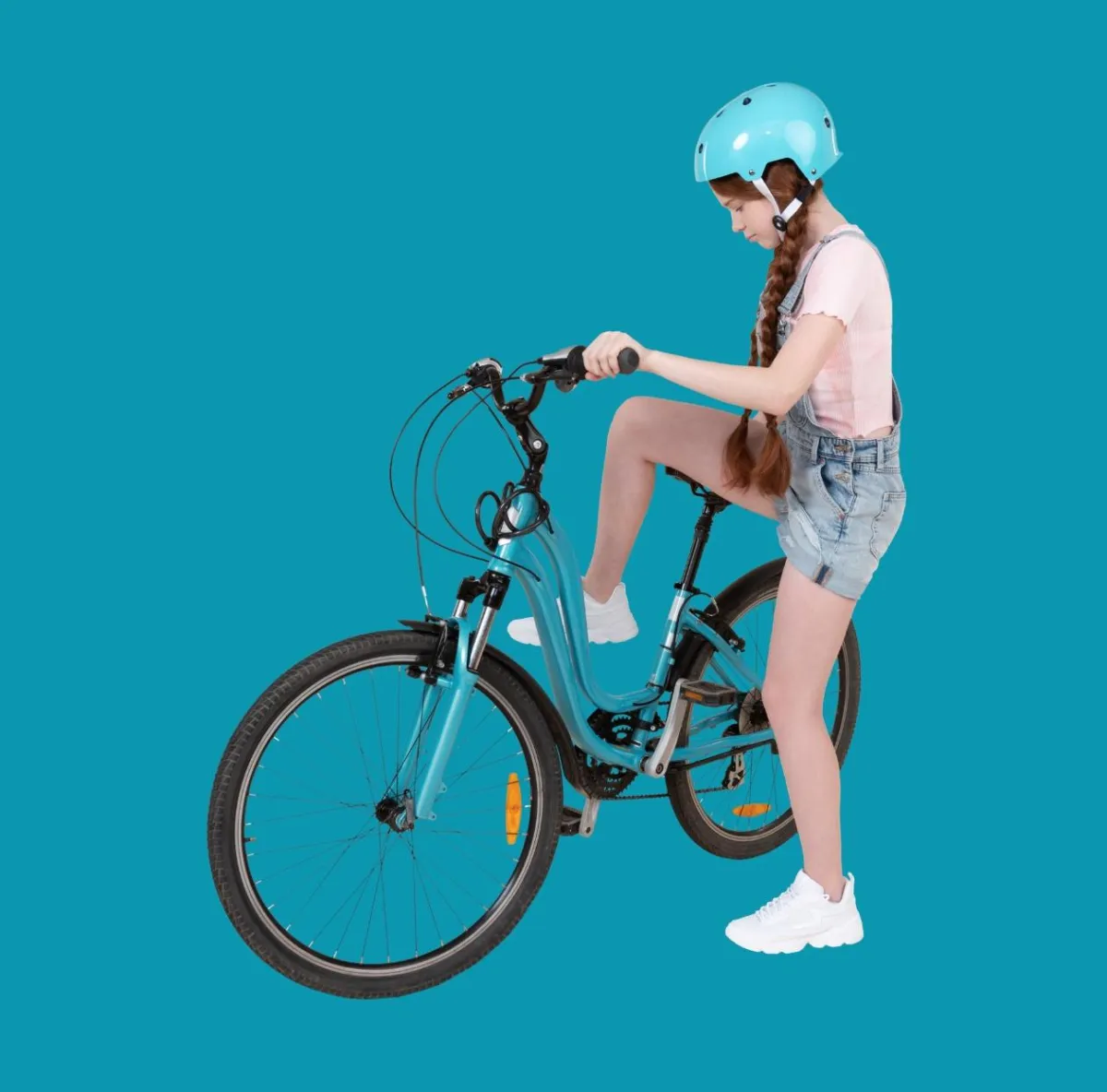
Eisha
The Story That Started It All
Discover why teaching kids to ride bikes became my mission with School of Cycle.
As a fairly new occupational therapist, I was just starting to find my rhythm. I was working with children aged 4 to 13 and constantly learning about "cool" topics to connect with them better. Building rapport was essential—not just to make therapy enjoyable but to encourage their participation and motivation.
One day, a mom walked into a session brimming with enthusiasm and said, "I want you to teach her to ride a bike."
My initial reaction? How am I supposed to teach her to ride a bike when I’ve never done this before?
Later, I told my husband the story, and he immediately said, "You’ve got this. Just think like an OT."
His advice clicked. I realized I could approach this challenge the same way I approached other therapy goals: by breaking it down into manageable steps and addressing the foundational skills first.
My First Student
Eisha became my very first "bike student." Over the course of five sessions at her home, I used a trial-and-error approach, throwing spaghetti at the wall to see what stuck. Eisha had challenges with balance and motor planning, so I focused on one skill at a time, helping her build confidence as she mastered each step.
This method required flexibility. Sometimes we needed to revisit earlier skills to solidify her foundation. To reinforce her progress, I assigned simple “homework” that helped her practice and make the skills feel natural.
Eisha’s situation was unique. She was tall, her bike was big, and I couldn’t physically guide her along the way. While this felt like an obstacle at first, it turned out to be a blessing. It forced me to create a system where the adult coach doesn’t physically do the work, enabling kids to develop independence. This system became the foundation of my approach to teaching bike riding.
The Common Misconceptions
Most people think learning to ride a bike is all about pedaling—it’s not. Others believe the secret is running alongside the bike, holding on, and then letting go, hoping for the best. This often leads to bumps, bruises, and frustration—not just for the child but for the parent, too.
In reality, a careful, step-by-step approach that fosters confidence and gradual skill mastery is key. Kids need to feel supported, not rushed, and it’s important to avoid frustration that can strain the parent-child relationship.
A Birthday Surprise
On the day of our fifth lesson—coincidentally my birthday—Eisha greeted me with a huge surprise. We headed outside, and she hopped on her bike, pedaling away like a pro. I was speechless. Tears welled up in my eyes as she grinned and said she wanted to surprise me with her accomplishment. She was so proud of herself, and her parents were overjoyed.
That moment was transformative for both of us. Watching Eisha achieve her goal and radiate joy made me realize that teaching kids to ride bikes was more than just a fun challenge—it was my calling.
Why It Matters
Riding a bike isn’t just a childhood milestone; it’s a lifelong skill. Whether for fun, exercise, transportation, or social bonding, biking opens doors to independence and adventure.
Eisha’s success was just the beginning. Now, with School of Cycle, I’m on a mission to help kids and families experience the joy and freedom that comes with mastering the art of bike riding.
